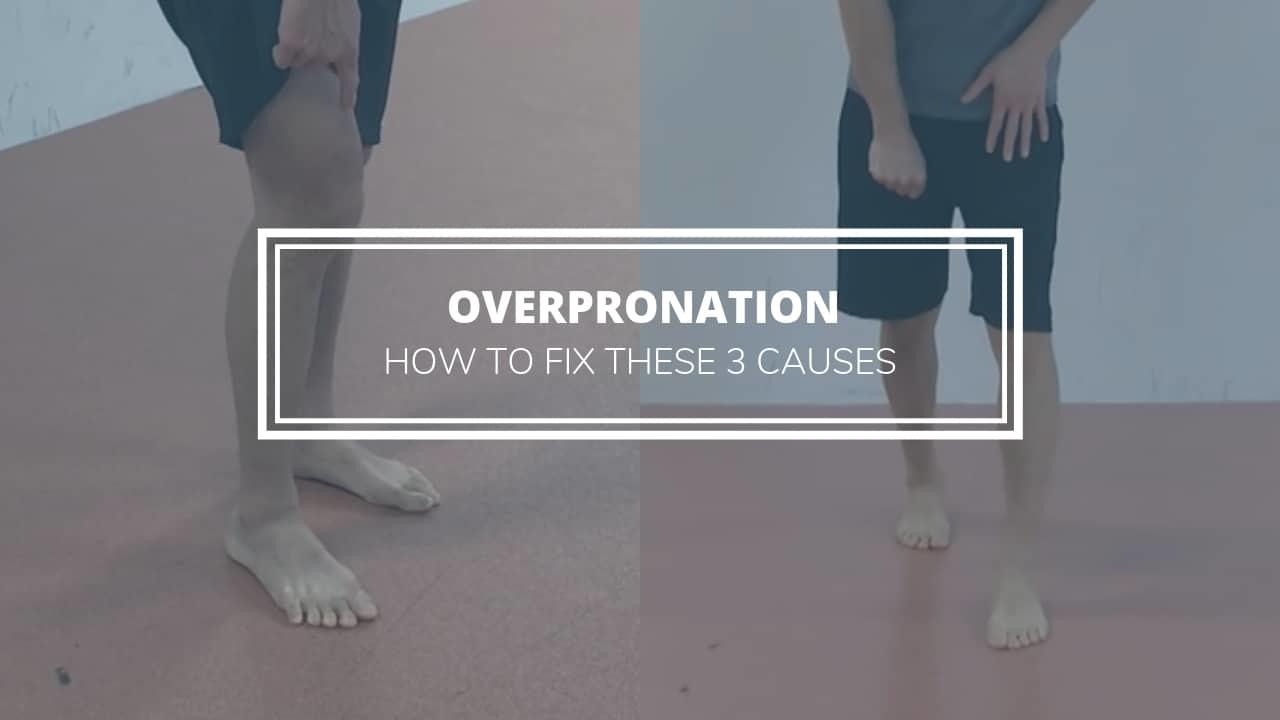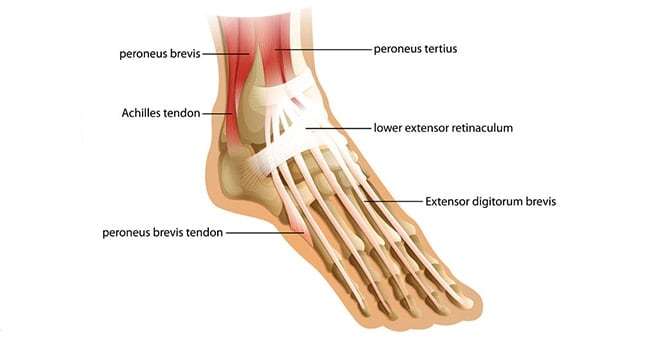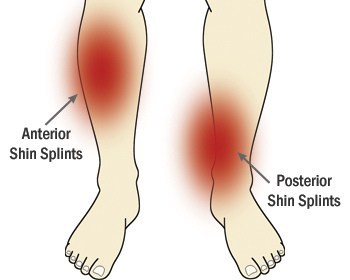
Overpronation is too much of a good thing. Pronation is a natural movement of the foot and ankle that occurs in healthy humans when we walk and run that helps absorb the shock of your foot striking the ground.
Pronation is a combination of 3 movements:
1) Eversion
2) Dorsiflexion (this is a great resource, if you need help with improving ankle dorsiflexion)
3) Forefoot abduction
Overpronation is when too much of these movements occur, which can lead to repetitive stress injuries and pain because if you’re overpronating, you’re putting excess stress on medial ankle and medial knee tissues.
Some of the issues that can crop up as a result of overpronation include:
Achiles tendonitis: in fact, a 2017 study showed that achilles tendon blood flow was decreased in overpronators, which can lead to impaired tissue recovery and pain. [1]
Plantar fasciitis: this 2014 study from the Journal of Biomechanics shows that overpronation results in greater stress to the plantar fascia. [2]
Shin splints: also known as medial tibial stress syndrome, overpronation and a pronated foot posture showed strong evidence as a risk factor as outlined in this 2014 study. [3]
Patellofemoral pain syndrome: the same shin splints study also linked overpronation to PFPS.
As you can see, overpronation can result in a number of different issues.
So if you get knee pain and you have overpronation but your treatment only includes glute, quad and hamstring exercises and stretches, you’re missing a critical component of your rehab.
How to Correct Overpronation
In today’s video, we’re going to explore some of the root causes that can lead to overpronation in the first place, that must be addressed to correct the problem at the source.
These 3 causes are by no means comprehensive as the human body can compensate in creative ways to get around dysfunctions you have.
If you’re an overpronator, I hope this gives you more insight into the issue and gets you thinking about how to fix it.
One exercise that I love that’s a part of my Lower Limb Control course is the Seated 4-Way MTP Slide.
While the technique looks simple, there are a few important cues that must be followed to make it effective.
Check it out here:
This is a great technique to do when you’re at the office or sitting around at home. If you can’t slide your foot, no worries, just get to end range where you can keep your foot flat and apply metatarsal pressure and you’ll still benefit. But it is definitely done best on surface where you can slide your foot while applying metatarsal pressure the whole time.




